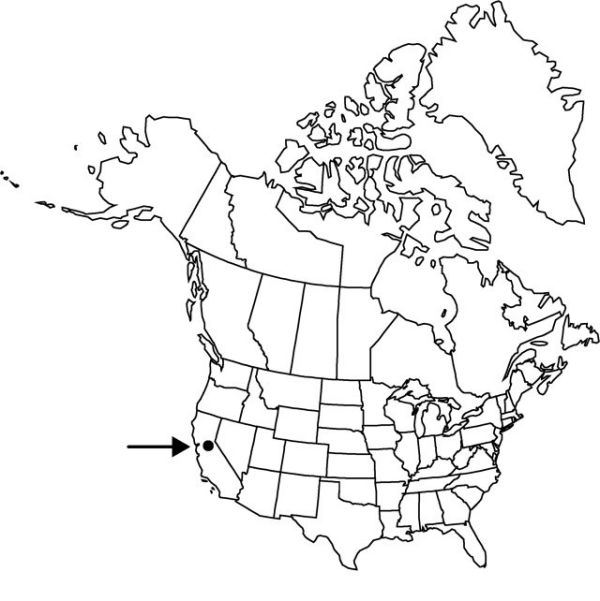Difference between revisions of "Brodiaea pallida"
Leafl. W. Bot. 2: 129. 1938.
FNA>Volume Importer |
imported>Volume Importer |
||
| (6 intermediate revisions by 2 users not shown) | |||
| Line 8: | Line 8: | ||
}} | }} | ||
|common_names=Chinese Camp brodiaea | |common_names=Chinese Camp brodiaea | ||
| + | |special_status={{Treatment/ID/Special_status | ||
| + | |code=E | ||
| + | |label=Endemic | ||
| + | }}{{Treatment/ID/Special_status | ||
| + | |code=C | ||
| + | |label=Conservation concern | ||
| + | }} | ||
|basionyms= | |basionyms= | ||
|synonyms= | |synonyms= | ||
| Line 25: | Line 32: | ||
|distribution=Calif. | |distribution=Calif. | ||
|discussion=<p>Of conservation concern.</p><!-- | |discussion=<p>Of conservation concern.</p><!-- | ||
| − | --><p>Brodiaea pallida is endangered. It forms a single population 10–20 feet wide for approximately one-fourth of a mile along a stream near Chinese Camp, Tuolumne County. It putatively hybridizes with B. elegans and is threatened by cattle-grazing and development. It is in cultivation.</p> | + | --><p><i>Brodiaea pallida</i> is endangered. It forms a single population 10–20 feet wide for approximately one-fourth of a mile along a stream near Chinese Camp, Tuolumne County. It putatively hybridizes with <i>B. elegans</i> and is threatened by cattle-grazing and development. It is in cultivation.</p> |
|tables= | |tables= | ||
|references= | |references= | ||
| Line 34: | Line 41: | ||
-->{{#Taxon: | -->{{#Taxon: | ||
name=Brodiaea pallida | name=Brodiaea pallida | ||
| − | |||
|authority=Hoover | |authority=Hoover | ||
|rank=species | |rank=species | ||
| Line 48: | Line 54: | ||
|publication title=Leafl. W. Bot. | |publication title=Leafl. W. Bot. | ||
|publication year=1938 | |publication year=1938 | ||
| − | |special status= | + | |special status=Endemic;Conservation concern |
| − | |source xml=https:// | + | |source xml=https://bitbucket.org/aafc-mbb/fna-data-curation/src/2e0870ddd59836b60bcf96646a41e87ea5a5943a/coarse_grained_fna_xml/V26/V26_658.xml |
|genus=Brodiaea | |genus=Brodiaea | ||
|species=Brodiaea pallida | |species=Brodiaea pallida | ||
Latest revision as of 21:16, 5 November 2020
Scape 10–20 cm, slender. Flowers 14–24 mm; perianth pale purple or lilac, rotate, tube urceolate, slightly contricted above ovary, 9–11 mm, thin, opaque, not splitting in fruit, lobes ascending to strongly recurved, 9–11 mm; filaments 4–5 mm, base not triangular, with narrow abaxial wings, appendages absent; anthers ± obcordate, 2–3 mm, apex notched into wide V; staminodia erect, held close to stamens, white, broad, 8–11 mm, margins 1/2 involute at mid length, apex deeply notched; ovary 4–5 mm; style 8–11 mm; pedicel 5–30 cm. 2n = 12.
Phenology: Flowering spring (late May–early Jun).
Habitat: Foothill woodlands in open areas along intermittent streambeds, serpentine soils
Elevation: 300–400 m
Discussion
Of conservation concern.
Brodiaea pallida is endangered. It forms a single population 10–20 feet wide for approximately one-fourth of a mile along a stream near Chinese Camp, Tuolumne County. It putatively hybridizes with B. elegans and is threatened by cattle-grazing and development. It is in cultivation.
Selected References
None.
